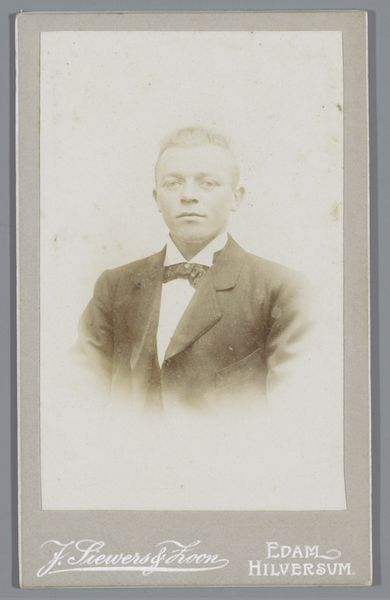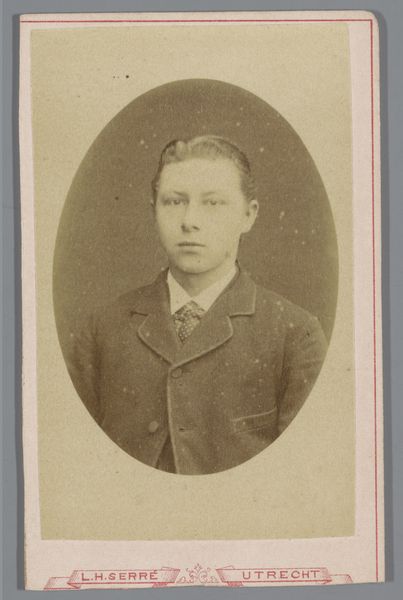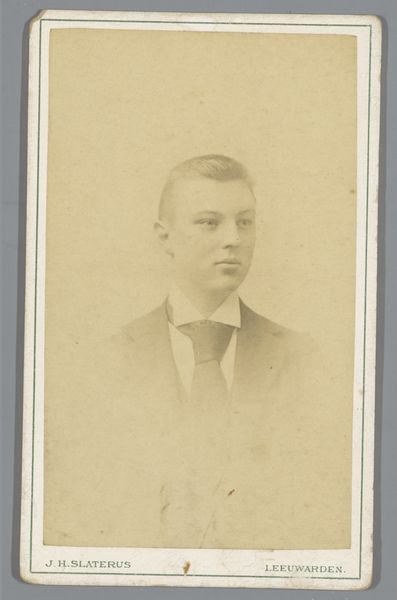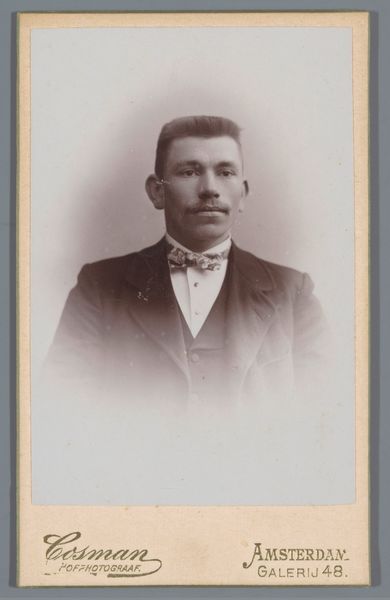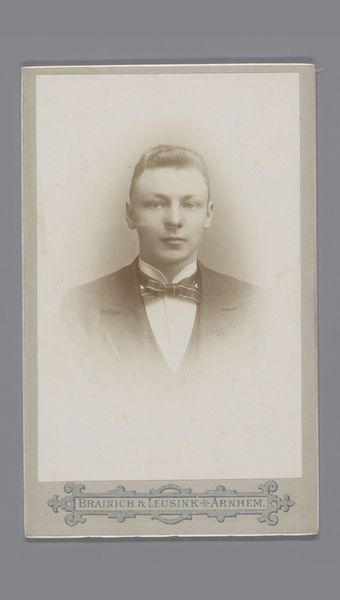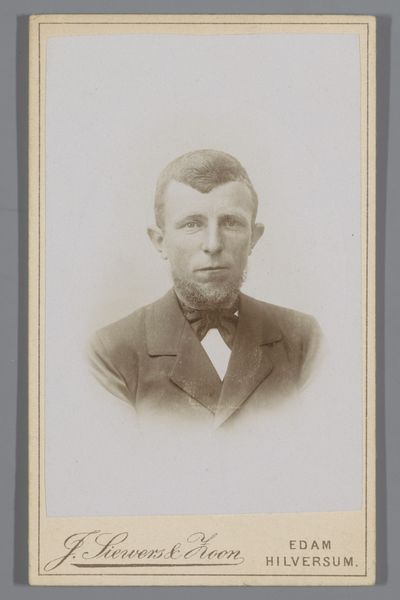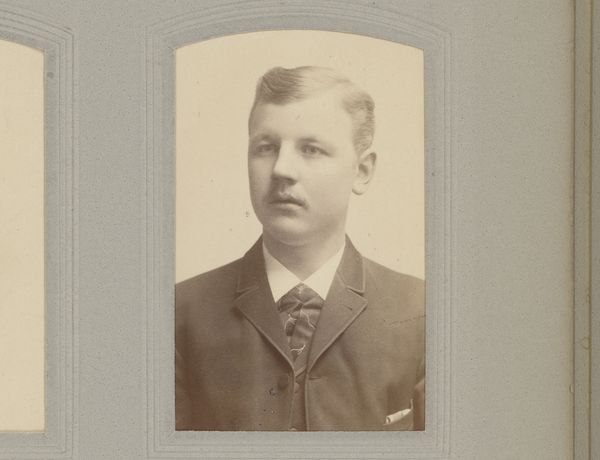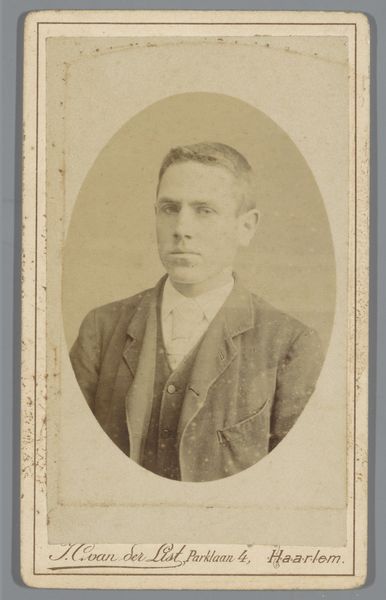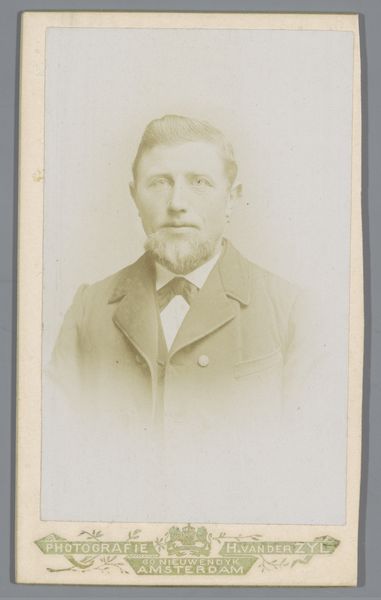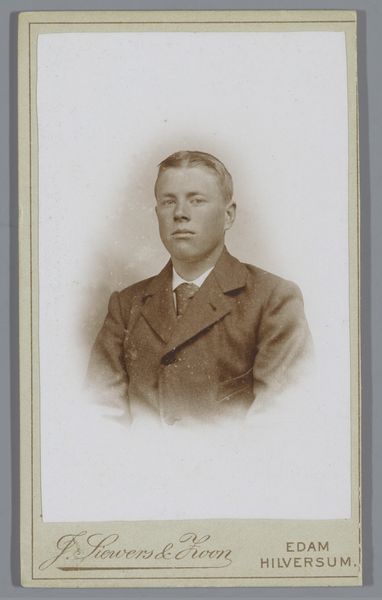
photography
#
vintage
#
photography
#
historical fashion
#
framed image
#
19th century
#
watercolor
#
realism
Dimensions: height 103 mm, width 64 mm
Copyright: Rijks Museum: Open Domain
Editor: This is "Portret van een onbekende man" by Wilhelmus Johannes van Pampus, dated sometime between 1888 and 1920. It appears to be a photograph, giving it a vintage feel. What do you see when you look at this portrait? Curator: I see a deliberate engagement with the emerging photographic culture of the late 19th century. The subject, dressed in the bourgeois fashion of the time, participates in the performative act of portraiture that photography enabled. Consider the power dynamics at play: Who commissioned this portrait, and what was its intended purpose? A memento? A social calling card? Editor: That’s a great point; it makes me think about access. Were photographs like these widely accessible at the time? Curator: Initially, no. Photography was expensive and time-consuming. So, who had the means to commission a portrait? What social class is represented, and conversely, who is excluded from this visual representation? Also, what do you make of the formal composition, the sitter's gaze, the lighting? Editor: His gaze is quite direct, almost confrontational. The lighting is soft, and the vignette effect almost suggests a painted portrait mimicking popular painting techniques of the time. It's trying to be art! Curator: Precisely. Early photography consciously borrowed from painting conventions to gain legitimacy as an art form. Understanding this tension between artistic aspiration and commercial enterprise reveals a lot about the cultural context in which this image was created and consumed. This struggle is a major focus of art history during this time. Editor: I never considered photography as having its own aspirations beyond simple reproduction, but the social implications add another layer of meaning. Thanks! Curator: Indeed! Thinking about these social, economic and technological factors helps us understand how images operate within society.
Comments
No comments
Be the first to comment and join the conversation on the ultimate creative platform.


